Os Fundamentos da Conversão de Laser de Fibra
A conversão para laser de fibra está mudando a forma como os fabricantes processam materiais. Isso envolve a substituição de sistemas de laser mais antigos, como lasers de CO2 ou Nd:YAG, pela mais recente tecnologia de laser de fibra. Isso não é apenas uma troca simples; é uma mudança fundamental na forma como a luz é criada e utilizada para corte, soldagem, marcação e outros processos industriais. Essa conversão pode impactar significativamente as finanças de uma empresa, desde as despesas operacionais até a qualidade do produto final.
Como Funcionam os Lasers de Fibra
Os lasers de fibra geram luz dentro de uma fibra óptica especial dopada com elementos de terras raras, como o itérbio. Diodos excitam esses elementos emitindo luz que estimula os átomos dentro da fibra. Isso cria um feixe de laser altamente focado e de alta qualidade. Ao contrário dos lasers de CO2, que precisam de sistemas de espelhos complexos para direcionar o feixe, os lasers de fibra contêm e guiam a luz dentro da própria fibra. Isso torna o sistema mais simples, mais compacto e mais durável.
As Vantagens do Design Único da Fiber
Essa vantagem de design embutido leva a vários benefícios chave. Os lasers de fibra são altamente eficientes, convertendo uma maior porcentagem da eletricidade de entrada em luz laser utilizável. Isso resulta em menor consumo de energia e redução dos custos operacionais. A reflexão interna da fibra também guia o feixe com perda mínima, resultando em maior potência de saída e velocidades de processamento mais rápidas do que os lasers tradicionais.
Os lasers de fibra também possuem qualidade de feixe superior, criando um ponto focal menor e mais intenso. Essa precisão aumentada permite cortes mais finos, soldagens intrincadas e marcações de alta resolução em diversos materiais. Isso é especialmente importante para indústrias que exigem alto detalhe, como a fabricação de eletrônicos e dispositivos médicos. O mercado global de lasers de fibra está crescendo rapidamente devido à sua adoção em diversos setores. Em 2023, o mercado foi avaliado em cerca de $3,50 bilhões e projeta-se que cresça a uma taxa de crescimento anual composta (CAGR) de 12,0%, alcançando $8,53 bilhões até 2031. O crescimento é especialmente forte na região da Ásia-Pacífico, impulsionado pelas indústrias automotiva e eletrônica. Saiba mais sobre as tendências do mercado de lasers de fibra aqui: https://www.kbvresearch.com/fiber-laser-market/
A conversão para laser de fibra é mais do que apenas uma simples atualização de equipamento. É um investimento estratégico em melhor produtividade, maior qualidade de produto e um futuro de fabricação mais sustentável. Essa tecnologia promete reformular os processos de fabricação em várias indústrias. 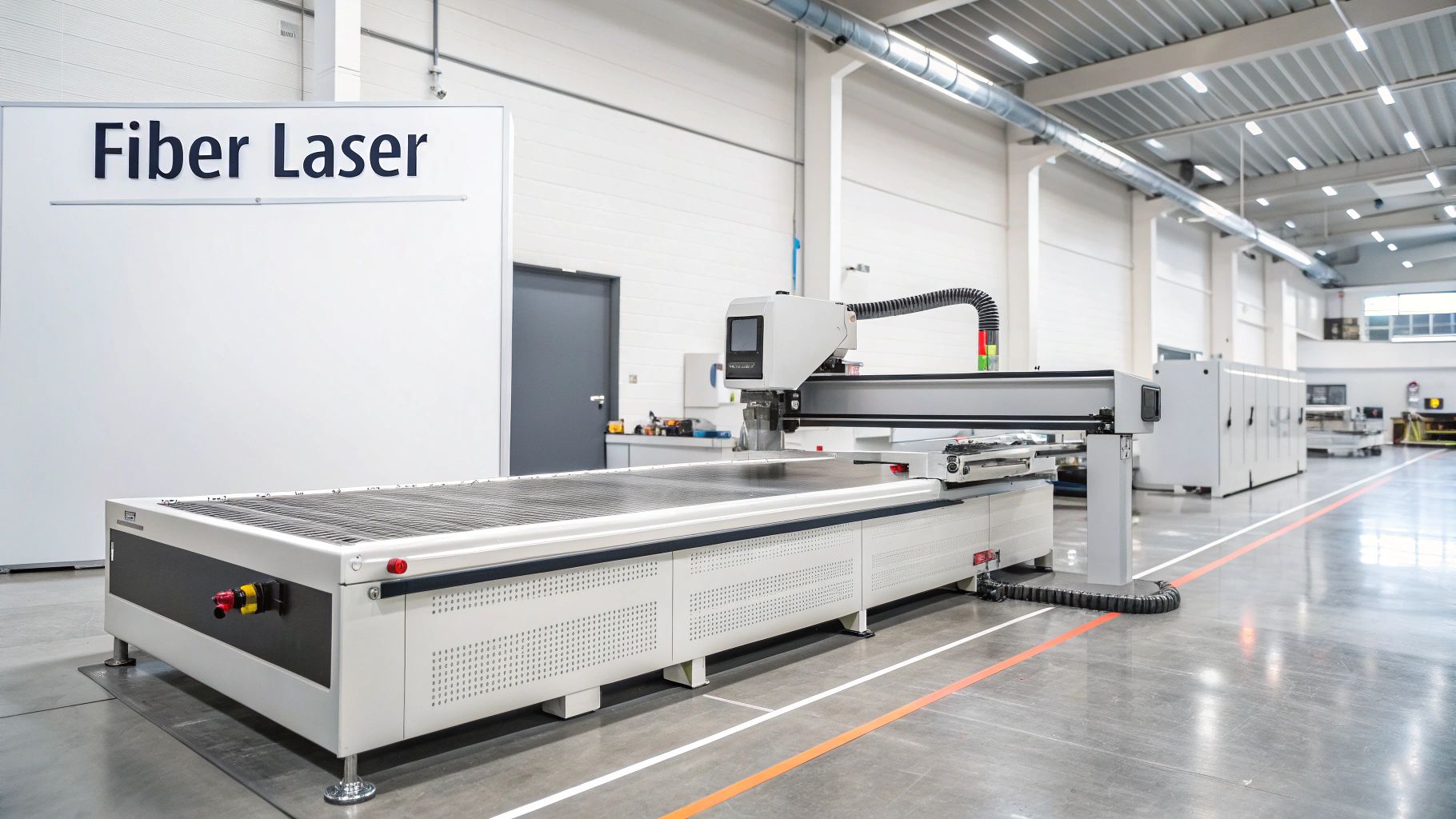
Benefícios Revolucionários da Conversão de Laser de Fibra
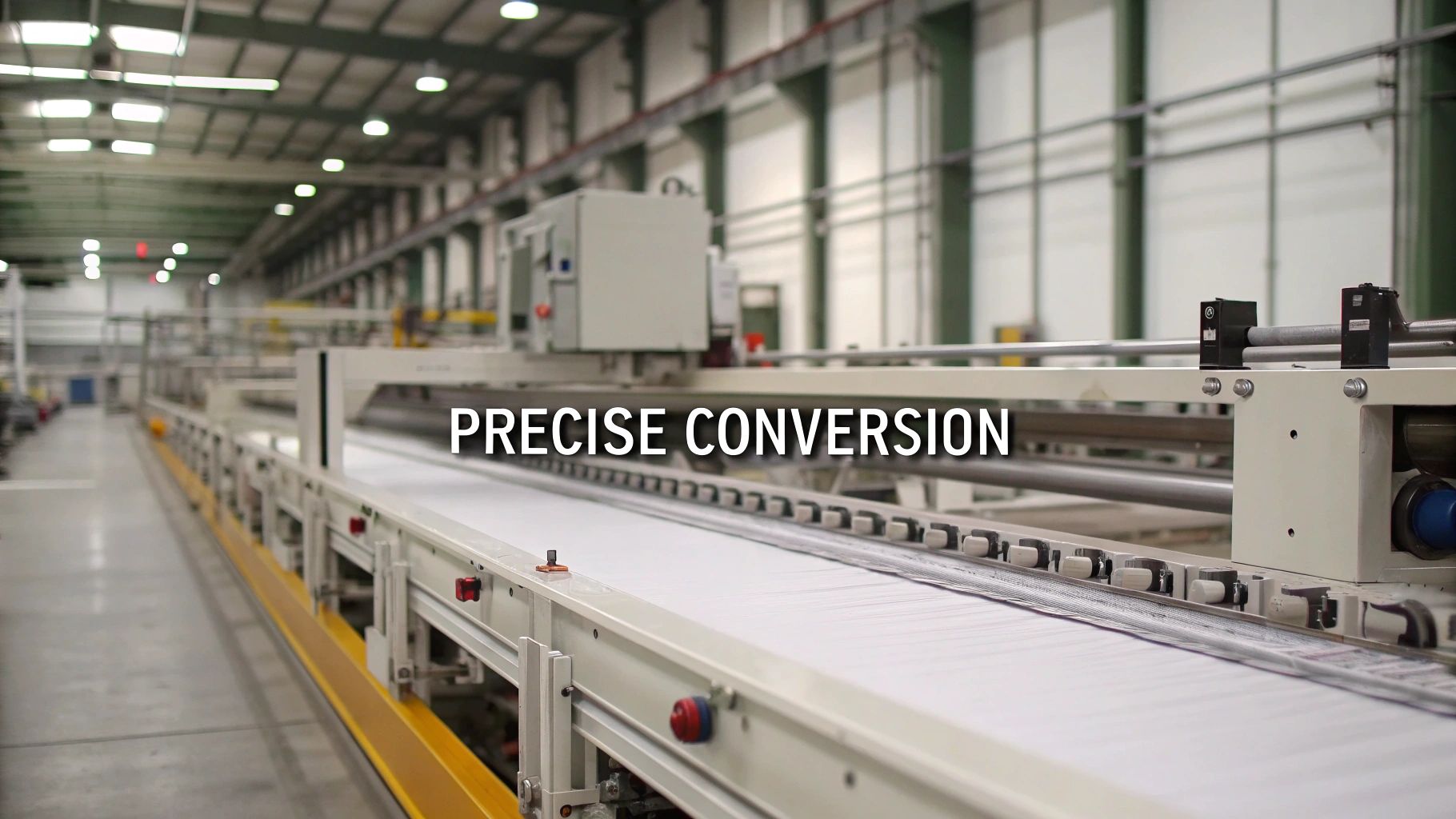
Fabricantes que integram lasers de fibra estão experimentando vantagens notáveis em seus processos de produção. Essas melhorias vão além das estimativas iniciais, impactando a eficiência, a qualidade do produto e a sustentabilidade geral.
Velocidade e Precisão Aprimoradas
Os lasers de fibra possuem qualidade de feixe superior em comparação com os tradicionais lasers CO2. Isso resulta em um ponto focal menor e mais intenso, permitindo velocidades de corte significativamente mais rápidas. Padrões intrincados em aço inoxidável, um material notoriamente difícil de trabalhar, podem ser cortados com maior velocidade e precisão.
A qualidade de feixe aprimorada também permite o processamento de materiais delicados como o alumínio com risco mínimo de distorção térmica. Esse nível de precisão é essencial para indústrias que exigem detalhes finos, como a fabricação de eletrônicos.
Manutenção e Tempo de Inatividade Reduzidos
Uma grande vantagem da conversão de laser de fibra é a redução significativa na manutenção. Muitas instalações relatam um 80% diminuição no serviço necessário. Lasers de fibra têm menos peças móveis e eliminam a necessidade de ajustes como alinhamentos de espelhos, comuns em lasers de CO2.
Essa redução na manutenção se traduz em menos tempo de inatividade e maior capacidade de produção, resultando em consideráveis economias de custos. Você pode estar interessado em: Como dominar...
Economia de Energia Significativa
Os lasers de fibra são incrivelmente eficientes, convertendo uma porcentagem maior de eletricidade de entrada em luz laser utilizável. Isso geralmente resulta em 30-50% de consumo de energia mais baixo em comparação com sistemas de laser tradicionais, como lasers YAG e lasers de CO2.
Isso não apenas reduz as despesas operacionais, mas também contribui para os esforços de sustentabilidade. Essas economias de energia se acumulam rapidamente, impactando positivamente o resultado financeiro de uma empresa.
Para entender melhor essas economias de energia, vamos fazer uma comparação direta:
Comparação entre Laser de Fibra e Laser Tradicional
| Métrica de desempenho | Laser de fibra | Laser de CO2 | Laser YAG |
|---|---|---|---|
| Eficiência Energética | Alto (30-50% menos energia utilizada) | Moderado | Moderado |
| Velocidade de corte | Muito alto | Moderado | Moderado |
| Manutenção | Baixo | Alto | Moderado |
| Vida operacional | Longo | Moderado | Moderado |
| Precisão | Alto | Moderado | Moderado |
Esta tabela destaca as principais vantagens dos lasers de fibra, particularmente em eficiência energética, velocidade e redução de manutenção. A menor manutenção e a vida útil mais longa contribuem para economias significativas de custos a longo prazo.
Qualidade e Consistência do Produto Aprimoradas
O feixe focado e a alta velocidade dos lasers de fibra produzem cortes mais limpos, soldas mais suaves e marcações mais precisas. Essa precisão elevada se traduz em produtos acabados de melhor qualidade e maior consistência.
Na fabricação de chapas metálicas, por exemplo, a zona afetada pelo calor reduzida minimiza a deformação e a descoloração das bordas, resultando em peças com precisão dimensional superior. Essa qualidade aprimorada aumenta diretamente a satisfação do cliente e minimiza as taxas de sucata.
Vida Operacional Estendida
Os lasers de fibra têm uma vida útil operacional substancialmente mais longa em comparação com sistemas de laser tradicionais. Seu design em estado sólido e construção simplificada aumentam sua robustez e resistência ao desgaste.
Essa vida útil prolongada reduz a necessidade de substituições frequentes, contribuindo para mais economia ao longo do tempo. A durabilidade dos lasers de fibra os torna um investimento inteligente para fabricantes que buscam estabilidade e eficiência a longo prazo.
Dominando Sua Jornada de Conversão de Laser de Fibra
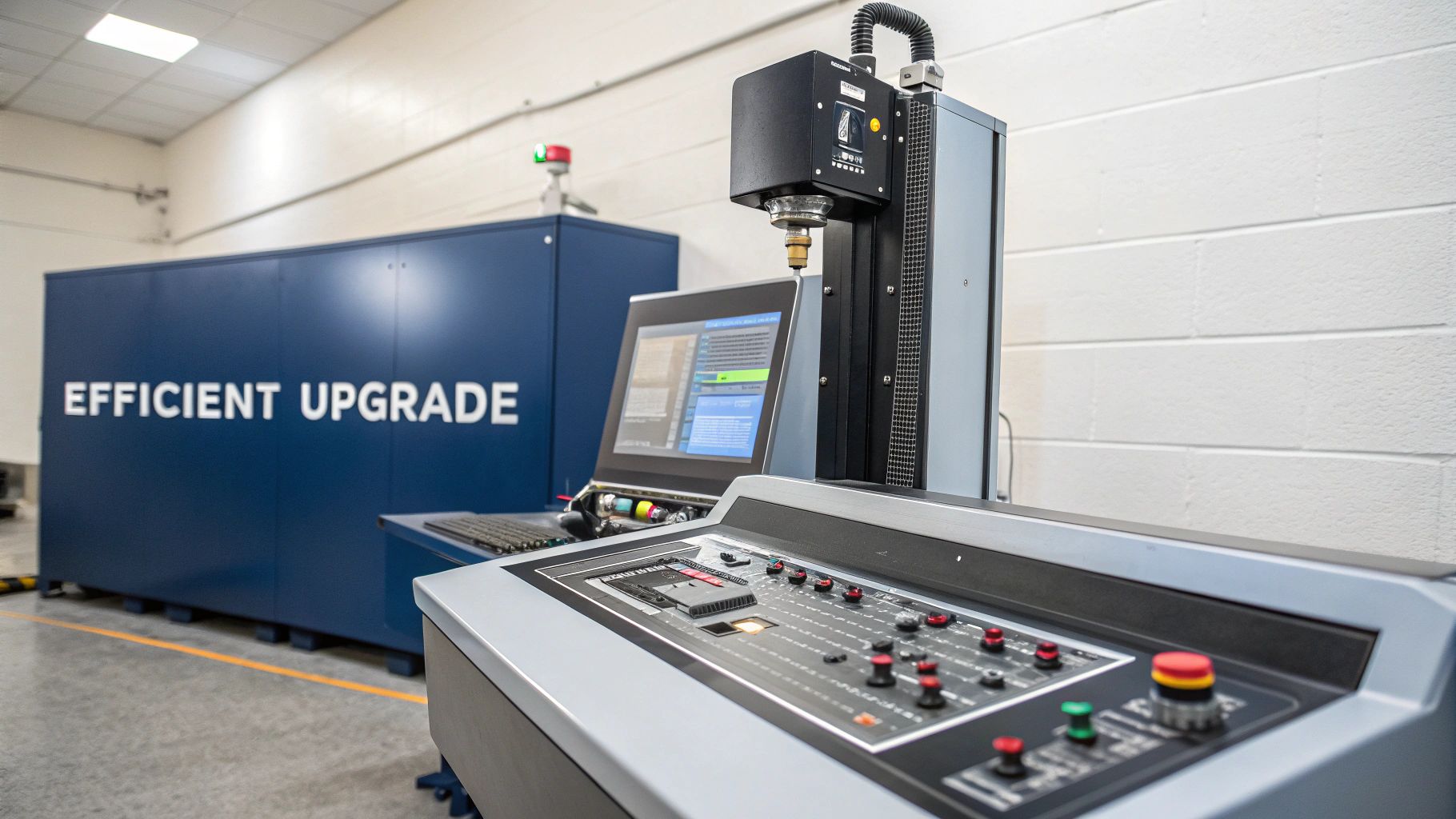
A transição bem-sucedida para a tecnologia de laser de fibra requer um plano bem definido e uma implementação cuidadosa. Este guia fornece um roteiro prático para incorporar a conversão para laser de fibra em suas operações sem grandes interrupções na produção.
Avaliação Inicial e Seleção de Tecnologia
Comece com uma avaliação abrangente de seus fluxos de trabalho de fabricação atuais. Isso envolve analisar os tipos de materiais com os quais você trabalha, seus volumes de produção típicos e sua infraestrutura existente. Por exemplo, entender a espessura e os tipos de metais que você processa é essencial para selecionar a potência certa do laser de fibra (por exemplo, 1,5kW, 3kW, 6kW) e a configuração.
Uma vez que você tenha analisado sua configuração atual, pode selecionar a tecnologia de laser de fibra ideal. Fatores como comprimento de onda, potência de saída e qualidade do feixe são críticos. Combinar cuidadosamente as capacidades do laser com suas aplicações específicas garante um desempenho ideal e maximiza seu retorno sobre o investimento.
Integração Sem Costura e Modificações de Instalações
Integrar um laser de fibra ao seu fluxo de trabalho existente requer previsão. Avalie a fonte de energia da sua instalação, os sistemas de refrigeração e o espaço disponível no chão. Algumas modificações na infraestrutura podem ser necessárias, mas muitas conversões exigem menos mudanças do que o esperado inicialmente.
Os lasers de fibra são frequentemente mais compactos do que seus predecessores. Essa menor área ocupada muitas vezes permite a instalação na mesma área anteriormente ocupada por sistemas mais antigos e volumosos. No entanto, confirmar a capacidade de potência e refrigeração suficientes é vital para um funcionamento confiável.
Treinamento de Funcionários e Eficiência Operacional
Investir em treinamento eficaz é fundamental para desbloquear todo o potencial do seu laser de fibra. Os operadores devem ser proficientes nos controles do sistema, nos procedimentos de segurança e nos parâmetros de processamento específicos do material.
Treinamento abrangente minimiza a curva de aprendizado, garantindo uma transição suave. Operadores bem treinados podem rapidamente alcançar velocidades de produção mais altas e melhorar significativamente a eficiência operacional geral.
Criando Cronogramas Realistas e Gerenciando Expectativas
Um cronograma realista para o processo de conversão é fundamental. Este cronograma deve abranger todas as fases, desde a avaliação inicial e entrega de equipamentos até a instalação, treinamento e testes completos.
A comunicação clara deste cronograma para todas as partes interessadas, incluindo a gestão e as equipes de produção, é crucial. Gerenciar proativamente as expectativas e abordar potenciais desafios previne atrasos e garante uma conversão bem-sucedida.
Minimizando o Tempo de Inatividade e Mantendo a Produção
Minimizar o tempo de inatividade da produção durante a conversão é essencial. Implementar a conversão em fases, ou agendá-la durante períodos de manutenção planejada, pode ajudar a manter o fluxo de produção.
Fazer parceria com integradores de laser de fibra experientes pode ainda mais simplificar o processo e minimizar interrupções. A experiência deles garante uma transição mais rápida e eficiente, minimizando o impacto na sua produção. Essa abordagem colaborativa mitiga o risco de problemas inesperados e mantém sua produção no caminho certo.
Priorizando o Planejamento e Evitando Armadilhas
Um planejamento cuidadoso é a pedra angular de uma conversão bem-sucedida de laser de fibra. Identifique problemas potenciais cedo, como fornecimento de energia insuficiente ou treinamento inadequado do operador. Abordar esses problemas de forma proativa previne atrasos custosos.
Aprender com as experiências de outros fabricantes que implementaram com sucesso lasers de fibra pode fornecer insights inestimáveis. Seus conselhos práticos e experiências do mundo real podem contribuir significativamente para uma conversão mais suave e eficiente, maximizando, em última análise, os benefícios da tecnologia de laser de fibra para suas operações.
Aplicações Inovadoras Impulsionando a Adoção de Laser de Fibra
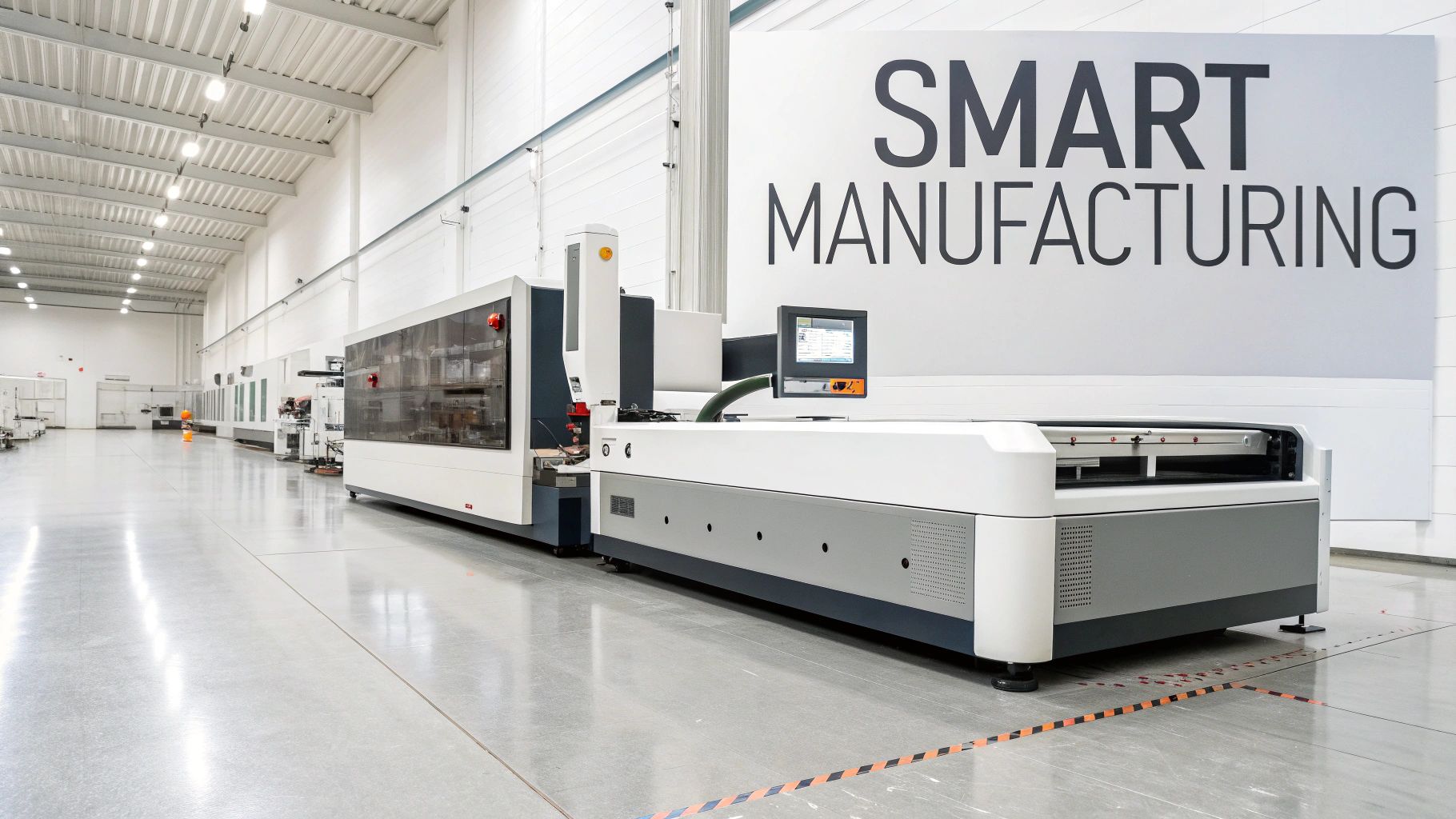
A conversão de laser de fibra representa um avanço significativo na tecnologia de corte. Ela desbloqueia uma gama de aplicações sofisticadas que não são possíveis com lasers tradicionais, impactando indústrias e mudando a face da manufatura.
Micro-Mecanização de Precisão
Os lasers de fibra se destacam em micro-usinagem, permitindo a criação de peças incrivelmente pequenas e intrincadas. O feixe altamente focado possibilita a remoção precisa de material em níveis microscópicos, resultando em características inatingíveis por métodos convencionais.
Essa precisão é crucial em vários campos. Na indústria de dispositivos médicos, por exemplo, lasers de fibra criam stents e implantes com geometrias complexas e tolerâncias incrivelmente apertadas. O setor de eletrônicos também se beneficia, utilizando lasers de fibra para produzir microcircuitos e outros componentes miniaturizados.
Revolucionando a Fabricação Aditiva
Os lasers de fibra também estão transformando a manufatura aditiva, mais comumente conhecida como impressão 3D. Em técnicas como a fusão a laser de leito de pó, o feixe de laser de fibra, controlado com precisão, derrete e funde pós metálicos camada por camada, construindo objetos tridimensionais complexos.
Isso permite designs intrincados, incorporando características internas impossíveis de serem alcançadas com processos de fabricação tradicionais. O feixe altamente focado também minimiza zonas afetadas pelo calor, resultando em peças de maior qualidade com propriedades mecânicas superiores.
Marcação de Alta Precisão em Ambientes Exigentes
Os lasers de fibra permitem marcação permanente e de alta resolução em praticamente qualquer material devido à sua natureza focada e alta densidade de potência. Essa marcação pode resistir a ambientes adversos, incluindo temperaturas extremas e materiais corrosivos. Isso a torna ideal para aplicações desafiadoras.
Um exemplo é a marcação de dispositivos médicos onde a rastreabilidade é essencial. Essas marcas a laser resistem a processos de esterilização, garantindo legibilidade e integridade dos dados ao longo do tempo.
Sistemas de Power Over Fiber (PoF)
O desenvolvimento e a implementação de lasers de fibra de alta potência impulsionaram avanços como os sistemas de Power over Fiber (PoF). Esses sistemas utilizam lasers de diodo de alta potência e conversores de energia fotovoltaica para transformar eficientemente a luz do laser em eletricidade. Saiba mais sobre sistemas de laser de potência.
Esta tecnologia pode alimentar sensores remotos e equipamentos de alta tensão, destacando seu potencial para aplicações confiáveis em utilidades e comunicação. Ela exemplifica as diversas aplicações da conversão de laser de fibra em vários setores.
Processamento de Materiais Exóticos e Conquista de Acabamentos Inigualáveis
A conversão de laser de fibra expande a gama de materiais com os quais os fabricantes podem trabalhar, incluindo materiais "exóticos" com propriedades únicas. Esses materiais, muitas vezes difíceis ou impossíveis de processar com lasers tradicionais, são utilizados em aeroespacial, defesa e outros campos de alta tecnologia.
Além disso, lasers de fibra alcançam acabamentos de superfície excepcionais. O controle preciso do feixe minimiza a rugosidade e as irregularidades da superfície, reduzindo ou eliminando a necessidade de pós-processamento. Isso resulta em peças com estética aprimorada e desempenho melhorado.
A tabela a seguir oferece uma visão mais profunda das vantagens específicas da indústria dessa tecnologia. Ela destaca a versatilidade e o potencial da conversão a laser de fibra em diferentes setores.
Aplicações Específicas da Indústria de Conversão de Laser de Fibra
| Indústria | Aplicativo | Principais benefícios | Compatibilidade de Materiais |
|---|---|---|---|
| Dispositivos médicos | Fabricação de stents e implantes | Alta precisão, geometrias intrincadas | Aço inoxidável, Nitinol, Titânio |
| Eletrônica | Produção de microcircuitos | Miniaturização, remoção precisa de material | Silício, cerâmicas, polímeros |
| Automotivo | Soldagem e marcação de componentes | Alta velocidade, zona afetada por calor mínima | Aço, alumínio, compósitos |
| Aeroespacial | Processamento de materiais exóticos | Permite o uso de materiais desafiadores | Ligas de titânio, superligas de níquel |
| Ferramentas | Marcação e gravação | Marcas permanentes e de alta resolução | Aço, carboneto, cerâmicas |
Esta tabela resume como várias indústrias estão aproveitando a tecnologia de laser de fibra para aplicações especializadas. A principal conclusão é a precisão aprimorada, a melhor compatibilidade com materiais e a maior eficiência que os lasers de fibra oferecem.
Essas aplicações avançadas demonstram que a conversão de laser de fibra não é apenas uma atualização de equipamento. É um catalisador para novas possibilidades de fabricação e capacidades expandidas. As superfícies lisas criadas pelos lasers de fibra reduzem o atrito e otimizam o desempenho das partes móveis em máquinas e outros sistemas complexos. Isso eleva a conversão de laser de fibra além de uma simples atualização, transformando-a em um portal para novas possibilidades e capacidades avançadas de fabricação.
ROI Real: O Caso Financeiro para Conversão de Laser de Fibra
Pensando em mudar para um laser de fibra? Uma parte fundamental dessa decisão é entender o retorno sobre o investimento (ROI). Esta seção explora o impacto financeiro da adoção de lasers de fibra em diversos ambientes de fabricação.
Investimento Inicial e Economias Operacionais
Embora o preço inicial de um sistema de laser de fibra seja geralmente mais alto do que o dos lasers tradicionais, as economias operacionais a longo prazo muitas vezes compensam esse custo inicial. Uma grande vantagem é a eficiência energética. Os lasers de fibra podem reduzir o consumo de energia em 30-50% em comparação com lasers de CO2, resultando em economias significativas nas suas contas de eletricidade, especialmente para operações de alto volume.
Menores requisitos de manutenção são outra vantagem. Como os lasers de fibra têm menos peças móveis do que os lasers de CO2, eles experimentam menos tempo de inatividade e custos de reparo mais baixos. Após a troca, muitas instalações relatam um impressionante 80% redução nas necessidades de manutenção.
Calculando o ROI Verdadeiro: Além do Básico
Um cálculo completo de ROI vai além de simplesmente observar as economias de energia e manutenção. O aumento da produção, graças a velocidades de corte mais rápidas, afeta diretamente seu resultado financeiro. Lasers de fibra cortam materiais significativamente mais rápido, permitindo que você produza um volume maior no mesmo período de tempo.
A melhoria na qualidade das peças e a redução das taxas de sucata também desempenham um papel crucial. A precisão dos lasers de fibra minimiza o desperdício de material e cria componentes de maior qualidade. Isso se traduz em clientes mais satisfeitos e menos retrabalho.
Períodos de Retorno e Ganhos de Produtividade
Os períodos de retorno sobre o investimento para a conversão de laser de fibra diferirão dependendo de fatores como seu volume de produção, os tipos de materiais com os quais você trabalha e a complexidade de suas aplicações. Por exemplo, uma instalação que processa grandes quantidades de chapa metálica fina provavelmente verá um ROI mais rápido do que uma especializada em corte de materiais grossos de baixo volume.
Para descobrir a viabilidade financeira para suas necessidades específicas, siga estes passos:
- Analise os custos operacionais atuais: Determine seus gastos atuais com energia, manutenção e material de sucata.
- Economias potenciais do projeto: Use dados de fabricantes que já fizeram a transição para lasers de fibra ou converse com fornecedores de lasers de fibra para ter uma ideia das economias potenciais.
- Considere os ganhos de produtividade: Leve em conta os aumentos na capacidade de produção e os tempos de produção mais curtos.
Estimar com precisão seu ROI é essencial. Você pode aprender mais em nosso artigo: Como dominar...
Ferramentas Práticas para Estimativa de ROI
Várias ferramentas podem ajudá-lo a estimar seus potenciais benefícios financeiros. Alguns fornecedores de equipamentos oferecem calculadoras de economia de energia para ajudá-lo a projetar a redução no uso de energia. Você também pode encontrar projeções de ganho de produtividade com base em dados de implementação do mundo real, oferecendo insights sobre possíveis aumentos de produção. Esses recursos podem ajudá-lo a construir uma justificativa financeira convincente para a conversão para laser de fibra.
Valor de Longo Prazo e Preparação para o Futuro
Por fim, pense sobre o valor a longo prazo. Os lasers de fibra geralmente duram mais do que os sistemas de CO2, reduzindo a necessidade de substituições frequentes. Isso proporciona estabilidade a longo prazo e custos previsíveis. Investir em tecnologia de laser de fibra pode proteger suas operações para o futuro e ajudá-lo a se manter competitivo à medida que o mercado muda. Ao analisar o ROI de forma holística e considerar fatores além da economia imediata de custos, você pode ver as verdadeiras vantagens financeiras de converter para lasers de fibra.
O Futuro da Tecnologia de Conversão de Laser de Fibra
A indústria de lasers de fibra está em constante mudança, oferecendo avanços empolgantes e levantando questões importantes para os fabricantes. Compreender essas tendências é crucial para fazer investimentos inteligentes que resistam ao teste do tempo.
Avanços no Controle de Qualidade do Feixe
Os esforços de pesquisa e desenvolvimento estão constantemente melhorando a qualidade do feixe do laser de fibra. Isso se traduz em um controle mais preciso sobre o foco do laser, resultando em maior precisão e desbloqueando novas aplicações. Por exemplo, esses avanços estão tornando a microfabricação possível em escalas incrivelmente pequenas, permitindo designs intrincados e geometrias complexas. Essa precisão aprimorada também minimiza a zona afetada pelo calor, reduzindo desperdícios e melhorando a qualidade do produto final.
Aumento da Potência de Saída
A potência de saída do laser de fibra está aumentando constantemente, permitindo um processamento mais rápido de materiais mais espessos. Isso é especialmente importante para indústrias como a automotiva e a aeroespacial, onde componentes metálicos espessos são comuns. Lasers de maior potência facilitam cortes e soldagens mais rápidos desses materiais, aumentando a produtividade e a eficiência. Isso também abre novas aplicações para lasers de fibra em áreas que exigem maiores densidades de potência.
Integração de Automação e IA
Integrar automação e Inteligência Artificial (IA) está transformando a manufatura. Algoritmos de IA podem otimizar parâmetros de laser em tempo real, compensando variações na espessura ou composição do material. Sistemas automatizados podem lidar com o carregamento e descarregamento de materiais, liberando operadores humanos para tarefas mais complexas. Confira este guia sobre componentes e sistemas de automação relacionados. Essa combinação de lasers de fibra, automação e IA leva a fábricas mais eficientes, com aumento de produtividade, consistência aprimorada e menos erros.
Melhorias em Sustentabilidade
A crescente conscientização ambiental está impulsionando a inovação na fabricação sustentável. Os lasers de fibra já oferecem economias significativas de energia em comparação com métodos tradicionais. No entanto, os desenvolvimentos futuros visam uma eficiência ainda maior e uma pegada ambiental menor. Antes de fazer o caso de investimento, é crucial realizar uma pesquisa de mercado completa e entender como avaliar o potencial de mercado de forma eficaz. Esses desenvolvimentos tornam os lasers de fibra uma ferramenta vital para empresas conscientes ambientalmente.
Tendências de Miniaturização
A tendência em direção a sistemas de laser de fibra menores e mais compactos amplia suas aplicações. Miniaturização torna esses lasers acessíveis a oficinas menores e aplicações especializadas onde o espaço é limitado. Isso traz as vantagens da tecnologia de laser de fibra para empresas que anteriormente não podiam utilizá-las devido a restrições de tamanho. Agora, mais empresas podem se beneficiar da velocidade, precisão e eficiência dos lasers de fibra, independentemente de seu espaço físico.
Esses avanços futuros destacam a necessidade de considerar cuidadosamente suas necessidades de longo prazo ao investir na conversão de laser de fibra. Selecionar um sistema que possa se adaptar a essas mudanças garantirá que seu investimento continue a oferecer valor à medida que a tecnologia evolui. Pronto para explorar as possibilidades dos lasers de fibra? Visite Laser Insights China hoje para descobrir as últimas inovações e ver como elas podem beneficiar suas operações.
